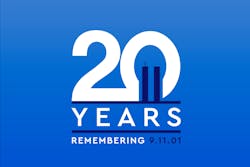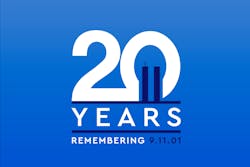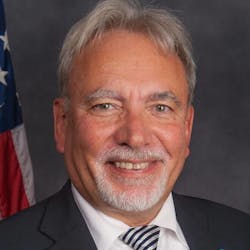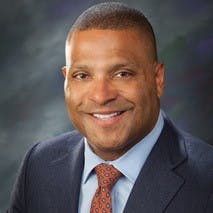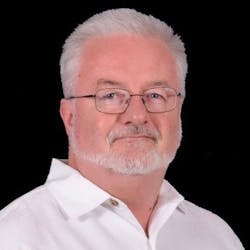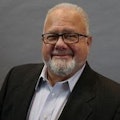For those of us who were born during the Cold War and are old enough to remember that era, a spate of tragic events etched themselves onto our collective American psyche.
We all remember exactly where we were when Walter Cronkite cried on national TV as he announced on CBS News that John Fitzgerald Kennedy, the 35th president of the United States, had been assassinated at 12:30 p.m. Central Standard Time on Friday, Nov. 22, 1963, in Dealey Plaza, Dallas, Texas. We remember where we were that fateful day, April 4, 1968, when Martin Luther King Jr. was fatally shot by James Earl Ray as the civil rights champion stood on the balcony of the Lorraine Motel in Memphis, Tennessee. His assassination ignited race riots nationwide. Two months later, on June 5, we remember where we were when Democratic presidential candidate Robert F. Kennedy was mortally wounded just after midnight at the Ambassador Hotel in Los Angeles after the junior Senator from New York won the South Dakota and California Democratic Presidential Primaries of 1968.
These are the vivid traumas that haunted me and all Americans as adolescents and teenagers born in the 1950s.
The grief of shared tragedies that are at the same time singular and public in their effect also marked us as adults. We remember the heart-stopping images on Jan. 28, 1986, when the NASA Space Shuttle orbiter Challenger broke apart 73 seconds into its flight and disintegrated over the Atlantic Ocean, killing all seven crew members. All of us know just where we were when we heard the news or witnessed the live coverage.
We all remember where we were when we learned of a most heinous act on the morning of April 19, 1995, when former soldier Timothy McVeigh parked a rented truck in front of the Alfred P. Murrah Federal Building in downtown Oklahoma City. Prior to 2001, it was an evil no U.S. citizen would have imagined possible. The deadliest terrorist attack in U.S. history at the time — a truck-bomb attack perpetrated on a weekday morning to maximize casualties, took 168 lives, including 19 children who were in a childcare center in the building — was carried out by a U.S. domestic terrorist and not al-Qaida. That was yet to come.
Although we shared these tragedies with a profound feeling of communal grief and collective loss, they didn’t change or influence the course of the United States as significantly as the devastating attacks on Sept. 11, 2001. The 19 Islamic terrorists who hijacked four U.S. jetliners to carry out suicide raids across the east coast of the country initiated a new era of morality, politics, security and distrust that still shrouds the country. Twenty years after two planes obliterated the World Trade Center in New York City, another buried itself into the edifice of the Pentagon in Washington, D.C. and a fourth crashed into a field in Shanksville, Pennsylvania, after a group of heroic passengers attacked hijackers for control of the plane, we still mourn for the nearly 3,000 people who died as a result of these terrorist attacks.The effect of the 9-11 attacks was transformative. They triggered major security initiatives at airports and other public venues and launched the Homeland Security Act of 2002 that created the Department of Homeland Security (DHS) — a department responsible for preventing terror attacks, upholding border security, immigration and customs and working on disaster relief and prevention. And yet, like the other visceral moments we shared as a nation, the observation of the 9/11 terrorist attacks’ 20th anniversary will elicit the same pointed questions: “Do you remember where you were when the planes hit, and has anything changed?”
Where Were You When the Planes Hit?
For Paul Joyal, Stacey Porter and Phil Halpin, their recollections have never wavered. All three were in the war zone. Joyal and Porter were working in Washington, D.C., while Halpin recently had made the transition from the New York City Police Department (NYPD) to the Suffolk County Police Department on Long Island.
Joyal, who is the managing director of NSI’s Homeland Security and Public Safety division and was the chief investigator of the 1983 Capitol Bombing while a member of the Capitol Police, remembers the incredible chaos he saw from the window of his Intercon USA office, which was half a block away from the White House.
“It took a call from eight time zones away to inform me,” adds Joyal, who also served as a federal law enforcement officer and as director of security for the U.S. Senate Select Committee on Intelligence from 1980 to 1989.
“I gathered my staff and informed them. Then came the attack on the Pentagon,” he continues. “I could see the smoke from my office window. The smoke rising from the Pentagon. At that point, I told my staff to go home. I could see the rapid traffic activity around the White House and our office. I urged my staff to immediately leave the downtown area and take secondary roads to get home. I explained that main roads will become clogged, and there might be other attacks. I took back roads home, and it took me more than double the time to arrive home. Panic had set in all over the Washington, D.C., area. It was all around me. I said to myself, ‘this is a catastrophe — the American homeland was attacked by our own planes.’”
Porter is the principal consultant at Porter Global Security in Atlanta. During the 9/11 attacks, he was providing security and protective services at the White House and complex grounds, the vice president's residence at the United States Naval Observatory and the Treasury Building as a veteran Secret Service agent.
“I was assigned to work the congressional picnic at the White House on 9/11 while working for the Secret Service,” Porter recalls. “When things began to unfold is when I first learned of the terrorist attack on our homeland. We began clearing everyone out of the White House to safety after getting word that an aircraft was headed to the White House.“I think the legacy of 9/11 will play a significant role as the cultural responses to it can help us think about other crises of nationality, like the one we are currently experiencing, and those we will need to work through for many years to come,” adds Porter, who served with DHS for another 20 years. “I believe we are better prepared for any attack as long as we continue to stay ahead of the problem instead of being reactive.”
Halpin is a vice president and the head of corporate security at Tanger Factory Outlets Centers. In his current role, he’s responsible for leading all aspects of the organization’s security strategy, program development, security operations and technology. This former U.S. Marine says 9/11 was a day he can never forget.
“I was living in Queens at the time and was driving home from working a midnight tour in Huntington [Long Island] and listening to Howard Stern,” Halpin recalls. “As I was driving through Queens on the [Long Island Expressway], they began to talk about a plane just hitting the WTC. I just made it inside and got the TV on in time to see the second plane hit. I made some calls — got my wife, fiancée at the time, to immediately come home from work, and I suited back up, met up with a couple of other off-duty cops and we headed into lower Manhattan.
“Reflecting back, it was surreal. Seeing the second plane hit, being able to see the smoking towers from Queens, the eventual collapse and then being on highways and city streets heading in with no vehicles, walking through an area I was intimately familiar with [the WTC Site and surrounding area], and it literally was a war zone.”
Although he might not have been in Washington or New York, Bryan Warren’s recollections of where he was on 9/11 are just as vivid. A veteran security director in the healthcare field across North Carolina and former sector chief for emergency services for InfraGard, Warren was on the job, heading to a regional hospital some two hours away from his home base to conduct a security assessment. That’s when his cellphone rang.
“[The caller] asked if I had seen the news, that a plane had just struck the World Trade Center in New York,” says Warren, who is now the principal consultant in his WarSec Security firm in Charlotte, North Carolina. “I advised I was driving and that I would call him back. Upon arrival at the hospital, everyone in the Emergency Department was crowded around a small TV on the wall, and they told me a second plane had struck the other tower. That's when I knew it was not an accident. My pager then started going off, and I had to drop everything and rush back to the office and start prepping for whatever might come next.”
Did 9/11 Better Prepare Us for Future Events?
On 9/11, Martin Cramer was the director of public safety for Downtown Dallas, which is a public/private partnership that coordinated security strategies with the Dallas Police Department, DART Police, DISD Police, Dallas College Police, North Texas Crime Commission, Downtown Security Directors and other organizations to address public safety issues in downtown Dallas. Less than an hour after the first plane hit the World Trade Center, Cramer was helping to evacuate 130,000 people from the Dallas city center.“The private sector and security organizations are much more prepared for critical incidents,” says Cramer, who now works with AK Preparedness as an emergency and fire code compliance consultant. “Facility and property managers take security very seriously, specifically active-shooter response, workplace violence, etc. Building evacuation training and drills are held on a regular basis, and employees take the training seriously. Prepare, respond and recovery are in every facility and property emergency plan. . Security professionals are much more tuned in to global and local events and threats that may impact their facilities and clients. Security organizations are members of threat assessment and alert networks, like HISN, InfraGard, JTTF, Fusion Centers, local law enforcement and security information sharing networks — although, 20 years later, the public sector is not sharing threat information between agencies and the private sector as much as they should. We are lucky in Dallas. The Dallas Police Department Fusion Center does share threat information with the private sector.”
Security policy and procedures, not to mention technologies, have advanced considerably over the past 20 years as a result of the threats the 9/11 attacks revealed. Porter cites the sweeping changes to air travel implemented by the Transportation Security Administration (TSA).
“Our security measures have evolved with new threats, so travelers are now asked to take off belts and remove some items from bags for scanning,” Porter says. “Anything that clearly could be wielded as weapons, like the box cutters used by the 9/11 hijackers, was banned. After shoe bomber Richard Reid’s attempt to take down a flight from Paris to Miami in late 2001, footwear started coming off at security checkpoints. Also, President George W. Bush signed legislation creating the [TSA], a force of federal airport screeners that replaced the private companies that airlines were hiring to handle security. The law required that all checked bags be screened, cockpit doors reinforced and more federal air marshals are put on flights.
“Lessons learned from 9/11 is that we have to continue to train and share intel information among the security community for our homeland to stay protected,” he adds. “The intelligence is out there. It’s what we do with it that makes a difference.”
Chris McGourty is president at the National Anti-Organized Crime Association in Boston and was a loss-prevention manager for Genuine Parts and Lowe’s. He agrees that there have been positive risk and security blueprints established as a result of 9/11, but diligence is required.“We can’t take our security for granted,” McGourty says. “The need for information-sharing is vital between all agencies and the private sector. New cybersecurity threats need to be addressed before any new attacks cause major destruction and death to our fellow citizens. The legacy of 9/11 has transformed the U.S. government and Americans’ attitudes about safety, privacy and the nation’s role in global affairs.”.
Sadly, Halpin has seen that memories fade when confronted with the realities of tightening budgets. Although many security practices have gained boardroom attention over the past two decades, money is always an issue.“In the years immediately after 9/11, there were a clear shift to more proactive intelligence gathering, significantly enhanced budgets for resources, tools and technology,” he says. “But as time went on, resources required more ‘business justification’ to attain approval. There began another evolution and shift for security functions to demonstrate their business value and quantify the ROI for the same resources and technology.”
He adds that improved public-private interaction has been sustained. “Much like the creation of the U.S. State Department’s Overseas Security Advisory Council, created in 1985 after the 1983 Beirut, Lebanon, bombings to establish a mechanism for regular communication between the public and private sectors concerning developments in overseas security, there was a realization that more needed to be done domestically, especially in terrorism-prone locations. A number of enhanced public- and private-sector information-sharing partnerships have been formed in the subsequent years, including the NYPD Shield and the Lower Manhattan Security Initiative to name just a couple.”
A Paradigm Shift
It isn’t just security and risk experts who have seen the paradigm shift regarding how the United States now addresses potential threat vectors. The establishment of federal agencies, such as DHS and TSA, along with a more defined mission for border protection agencies has kept the country safe from Islamic terrorist attacks for 20 years. Unfortunately, potential vulnerabilities emanate from home-grown radicals and white supremacist groups.
The first-responder community and healthcare professionals have gained a better, if not painful, understanding of traumatic PTSD symptoms and treatment. 9/11 also restructured how local and state law enforcement, fire departments and other public-safety agencies shape their crisis-response preparation strategies and how they integrate advanced technologies into their plans.
“Prior to 9/11, the best way to describe our security, defense, intelligence and law enforcement collaborations were ‘stovepiped’ or ‘siloed,’ parochial and often competitive,” Joyal says. “The failures in intelligence led to changes that shape our new world today. The creation of the Department of Homeland Security [and] the creation of the joint Intelligence Fusion Centers under DHS with joint staff of federal, state and local law enforcement all lead to greater intelligence-sharing, which may not be perfect, but it shows great progress. Public-private partnership groups also prospered, like The FBI InfraGard organization that focused local chapters on the critical infrastructure in their area.”
Joyal says he's optimistic about the improved collaboration of the public and private sectors. “It takes a network to defeat a network. We need a public-private partnership to succeed. In fact, successful counterterrorism requires an all-in societal effort as key to our network response. Government and private sector need one another.”
“Initially, the attacks spurred a confluence of security and emergency management, some portions of which still exist today, such as common language emergency codes and redundant communications systems,” Warren says. “In healthcare security, patient-surge events suddenly became much more than just theory, and a lot of work was done on preparing for potential manmade issues and not just weather events. Sadly, the proactive security philosophy that resulted from this attack diminished rather quickly, and within a few years, security was no longer a fundamental issue for many industries — just another budget item. Security should be considered as an investment, not just a cost center, and that networking and routine communication between security professionals and first responders is invaluable and should be a part of any private-sector organization’s security program. Security and convenience are like dance partners: Convenience can lead during the slow music, but security should take the lead when the tempo speeds up.
“We are better prepared in some ways,” Warren adds. “However, complacency is a dangerous and sinister thing. It lulls you into a false sense of well-being. I think that many business leaders misinterpret a lack of significant terrorist activity as a reason to cut security funding when, in fact, the lack of terrorist events is due to security doing what it is designed to do. Absence of evidence is not the evidence of absence, and that is something that only experience from the field can teach you.”
Final Words
As The New York Times media critic James Poniewozik opined last week, “For 20 years, the refrain has been: Remember, remember, remember. Memory is so ingrained in the language of Sept. 11 — ‘Never forget’ — as to imply that it is obligatory, and sufficient, for future generations merely to remember by revisiting the narrative and imagery of one terrible day, rather than to connect it to the years of history that followed.”
The lessons learned from Sept. 11, 2001, will be remembered as long as there are Americans who understand its effect and experienced its pain. But as memories fade for future generations, will the lessons be forgotten and ignored?
“As unappealing as it might be, a war doesn’t end when one side stops fighting,” Halpin says. “I believe the lesson that still needs to be addressed is our unity, resolve and fortitude as Americans to continue to do what is necessary to actively prosecute the war on terror, so history does not continue to repeat itself.”
About the Author: Steve Lasky is a 34-year veteran of the security industry and an award-winning journalist. He is the editorial director of the Endeavor Business Media Security Group, which includes magazines Security Technology Executive, Security Business and Locksmith Ledger International and top-rated webportal SecurityInfoWatch.com. Steve can be reached at [email protected]
About the Author
Steve Lasky
Editorial Director, Editor-in-Chief/Security Technology Executive
Steve Lasky is Editorial Director of the Endeavor Business Media Security Group, which includes SecurityInfoWatch.com, as well as Security Business, Security Technology Executive, and Locksmith Ledger magazines. He is also the host of the SecurityDNA podcast series. Reach him at [email protected].
